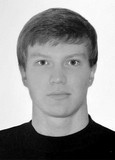Features of the physique in young martial arts athletes
Keywords:
morphological features, anthropometry, age-related variability, wrestling, boys aged 9-13, youth sports.Abstract
Objective of the study was to identify the features of the physique of young martial arts athletes aged 9-13 years.
Methods and structure of the study. The somatic features (more than 30 signs and indices characterizing the size and proportions of the body) of boys aged 9 to 13 years were studied. At each age, two groups were compared: athletes specializing in various types of wrestling (surveyed in 2018), and a control group of schoolchildren not involved in sports (surveyed in 2013-2017). The total number of subjects was 686 people.
Results and conclusions. The features of body proportions in young wrestlers are revealed: absolutely and relatively wide shoulders, absolutely and relatively elongated torso. Athletes are distinguished by an increased development of chest and forearm girths; schoolchildren who do not play sports have larger waist, buttocks, shoulders and hips. The development of subcutaneous fat deposition in two samples does not fully correspond to the circumference dimensions: the thickness of the skin-fat fold over the triceps and on the abdomen (straight line) is greater in athletes. At the same time, the thickness of the skin-fat fold on the forearm of martial artists is less than that of boys from the control group. Such a combination of somatic characteristics in martial artists specializing in different types of wrestling is considered as a wrestling body type.
A comparative analysis of martial arts athletes and schoolchildren who are not involved in sports revealed the most informative signs in relation to sports selection (ratio of skeletal dimensions) and the level of physical activity and their specificity (circumference dimensions of the body and subcutaneous fat deposition). Growth processes at all stages of ontogenesis significantly correct the morphological features of athletes in different sports.
References
Bovykin S.S., Godina E.Z., Makhalin A.V. Morfologicheskie kharakteristiki bortsov muzhchin 9-11 let [Morphological characteristics of 9-11 year-old male wrestlers]. Teoriya i praktika fizicheskoy kultury. Moscow, 2020. No. 10. pp. 76-79.
Bunak V.V. Antropometriya [Anthropometry]. Practical guide for universities. Moscow: NARKOMPROSA RSFSR publ., 1941. 367 p.
Godina E.Z., Kolomeychyk A.A., Zabolotnaya I.M. Izmeneniya nekotorih morfologicheskih harakteristik y sportsmenov za poslednie 50 let (na primere borcov volnogo stilya [Changes of some morphological characteristics at athletes over the last 50 years (on the example of fighters of freestyle)]. Estestvennie i tehnicheskie nauki. 2012. No. 3. pp. 156-161.
Godina E.Z., Khomyakova I.A. Osobennosti rostovykh protsessov u sovremennykh shkolnikov Moskvy [Features of growth processes in modern schoolchildren in Moscow]. V sbornike Fizicheskoe razvitie detey i podrostkov Rossijskoy Federatsii. Moscow: Litterra publ., 2019, pp. 22-33.
Kylasov A.V., Tedoradze A.S. Tezisy k formirovaniyu ponyatiya «Tradicionnaya borba» [Theses to the formation of the concept of "Traditional wrestling"]. Boevye iskusstva i sportivnye edinoborstva: nauka, praktika, vospitanie [Martial arts and combat sports: science, practice, education]. Proceedings national scientific-practical conference with international participation. Moscow, June 16-17, 2016. pp. 144-152.
Martirosov E.G., Kasparova E.N., Skrigan G.V., Dunaj V.I., Martirosova K.E. Fenotipicheskiy pol i agressivnost u muzhchin-sportsmenov i muzhchin, ne zanimayushchihsya sportom [Phenotypic sex aggressiveness in male athletes and men not engaged in sports]. Vestnik Moskovskogo universiteta. Seriya XXIII. Antropologiya. 2018. No. 4. pp. 56-66. DOI: 10.32521/2074-8132.2018.4.056-066.
Sirazetdinov R.E., Godina E.Z., Khomyakova I.A., Negasheva M.A. Kompyuternye tekhnologii dlya ehkspress-otsenki somatotipov sportsmenov-edinobortsev [Computer technologies for rapid assessment of combat athletes’ somatotypes]. Teoriya i praktika fizicheskoy kultury. Moscow, 2021. No. 2. pp. 98-100.
Tkachuk M.G., Sobolev A.A. Somatotipologicheskie osobennosti borcov-sambistov srednih vesovyh kategoriy [Somatotypological features of Sambo wrestlers of medium weight categories]. Uchenye zapiski universiteta P.F. Lesgafta. 2016. No. 4 (134). pp. 282-285. DOI: 10.5930/issn.1994-4683.2016.04.134.
Kharlamov E.V., Popova N.M., Zhuchkova I.N., Safonova L.F., Veselova L.V. Antropometricheskie i funktsional'nye pokazateli sportsmenov, zanimayushchikhsya sportivnymi edinoborstvami v greko-rimskom stile [Anthropometric and Functional Indicators of Athletes Involved in Martial Arts in the Greco-Roman Style]. Sportivnaya meditsina: nauka i praktika. 2019. Vol. 9. No. 1. pp. 28-32.
Burdukiewicz A., Pietraszewska J., Stachoń A., Andrzejewska J. Anthropometric profile of combat athletes via multivariate analysis. The Journal of Sports Medicine and Physical Fitness, 2018, 58 (11), pp. 1657-1665. DOI: 10.23736/S0022-4707.17.07999-3.
Quetelet A. Physique Sociale. 1869. Vol. 11.
Sterkowicz-Przybycien K.L., Sterkowicz S., Zarow R.T. Somatotype, body composition and proportionality in polish top greco-roman wrestlers. J. Hum. Kinet., 2011, 28, pp. 141-154. DOI: 10.2478/v10078-011-0031-z Section III – Sport, Physical Education & Recreation.


